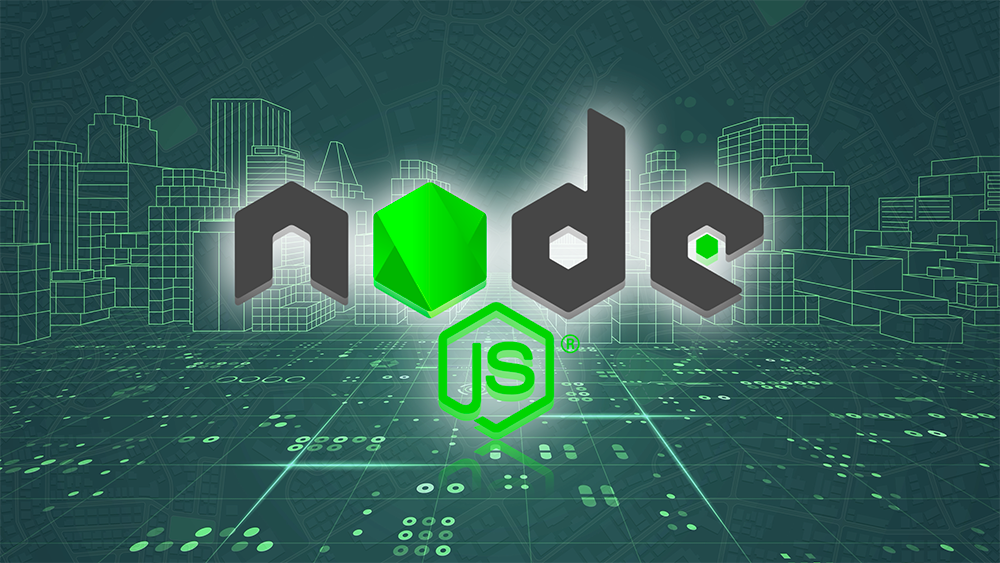The modern world of technology offers countless opportunities for advancing programming and optimizing development processes. Innovative tools help create applications that surpass traditional solutions. Specialists strive to employ state-of-the-art libraries, packages, and editors to boost performance and efficiently execute operations. This article reveals the intricacies of working with node.js, while examining its advantages, features, and methods for learning it.
Contents:
- What is Node.js
- Features of the Runtime Environment
- Advantages and Disadvantages
- How Node.js Works Internally
- What Can Be Built with Node.js
- How Much Node.js Developers Earn
- How to Learn Node.js
What is Node.js
The node.js platform allows javascript to be executed outside the browser, meaning that code can run on a server. By “executing javascript outside the browser,” we mean running code in an environment that is not limited to the typical browser setting. This technology is built on the Chrome V8 engine, which compiles javascript into native machine code for high performance.
The platform is used to create server-side programs capable of handling numerous requests simultaneously. Programming with node.js opens up opportunities for developing everything from small websites to large corporate applications. The code editor helps structure the application-building process, while installing the necessary packages is fast and convenient.
Features of the Runtime Environment
A key feature of the node.js runtime is its use of a single-threaded model combined with asynchronous execution of operations. This approach allows handling many requests without blocking the main process. Meanwhile, the event loop coordinates the execution of asynchronous operations, ensuring an efficient distribution of tasks.
The asynchronous process makes it possible to run several operations concurrently, which is especially important for real-time and scalable applications. Packages available through the package manager simplify development by offering ready-made solutions for common tasks. The code editor and library support the developer at every stage of application creation—from the initial installation to integrating complex modules.
Advantages and Disadvantages
The node.js platform boasts numerous advantages that make it popular among developers. High performance and the ability to manage a large number of connections make it indispensable for building real-time applications, such as chat systems, streaming services, and e-commerce websites. Its asynchronous nature improves application response time and reduces delays in executing operations.
Some key advantages include:
- High performance for real-time applications. Thanks to non-blocking execution, node.js provides rapid response times even under heavy loads.
- Easy scalability. Load balancing across CPU cores and the use of cluster modules enable effortless scaling of applications.
- Development flexibility. Node.js is suitable for both simple and complex systems, supporting front-end as well as back-end programming.
- Rich package ecosystem via npm. The vast number of ready-to-use packages simplifies development and reduces the time needed to build an application.
However, the platform does have its drawbacks. The single-threaded model can limit capabilities when performing resource-intensive computations, and the asynchronous approach requires developers to structure code carefully to avoid “callback hell.” Additionally, some APIs may be unstable, necessitating constant code updates with new versions of node.js.
How Node.js Works Internally
The architecture of node.js is based on a modular principle, which simplifies program creation by breaking it down into independent components. Each module is responsible for a specific operation or function, allowing developers to install additional packages easily to extend the application's functionality. The use of an event loop for asynchronous execution ensures high system responsiveness even with numerous simultaneous requests.
Below is a table outlining the main components of the architecture:
Utilizing this architecture reduces development time, ensures scalability, and improves the stability of program execution.
What Can Be Built with Node.js
The node.js platform offers opportunities to create a wide range of solutions. Programming with this tool enables the development of server-side applications, RESTful APIs, websites, chat rooms, streaming services, and even CLI tools for automating routine tasks. With the ability to work on both the client and server sides, a developer can build a unified codebase that functions across different parts of an application.
Using a single language—javascript—for the entire project reduces development complexity and enhances productivity. The code editor helps organize the creation process, while the rich package library speeds up the integration of ready-made solutions. Node.js is particularly advantageous for startups, where quickly developing a minimum viable product (MVP) on a limited budget is essential.
How Much Node.js Developers Earn
The salary level of specialists proficient in node.js depends directly on experience, region, and project complexity. A developer with skills in asynchronous operations and knowledge of javascript is in high demand. Companies such as PayPal, LinkedIn, Uber, and Netflix have already successfully integrated this technology into their projects, which confirms its efficiency and competitiveness.
Comparison of developers' salaries by country. Sources: Glassdoor, Indeed, PayScale
The high performance of applications built with node.js and the platform’s ability to handle many requests simultaneously make it attractive to corporate clients. This, in turn, reflects on the income levels of specialists and creates excellent career prospects for those who master modern development methods.
How to Learn Node.js
Getting started requires a solid understanding of javascript and basic programming principles. Installing the platform and configuring the code editor allow you to quickly dive into practice. Building simple programs helps you grasp the fundamentals of asynchronous execution and working with packages—an important feature of node.js.
For successful mastery of the technology, it is recommended to:
- Study official documentation and materials provided by developer communities.
- Take online courses that detail working with npm, installing packages, and creating simple applications.
- Participate in forums and discussions to get answers from experienced specialists.
- Apply the acquired knowledge in practice by developing small projects to reinforce your skills.
Below is a table with the key steps for learning node.js:
Regular practice and involvement in real projects will help you become a confident developer. Thanks to a rich community and a multitude of resources, learning node.js is not difficult.
You can take your first steps towards mastering Node.js at the international online programming school YCLA Coding. This is where IT legends are born!



Write comment